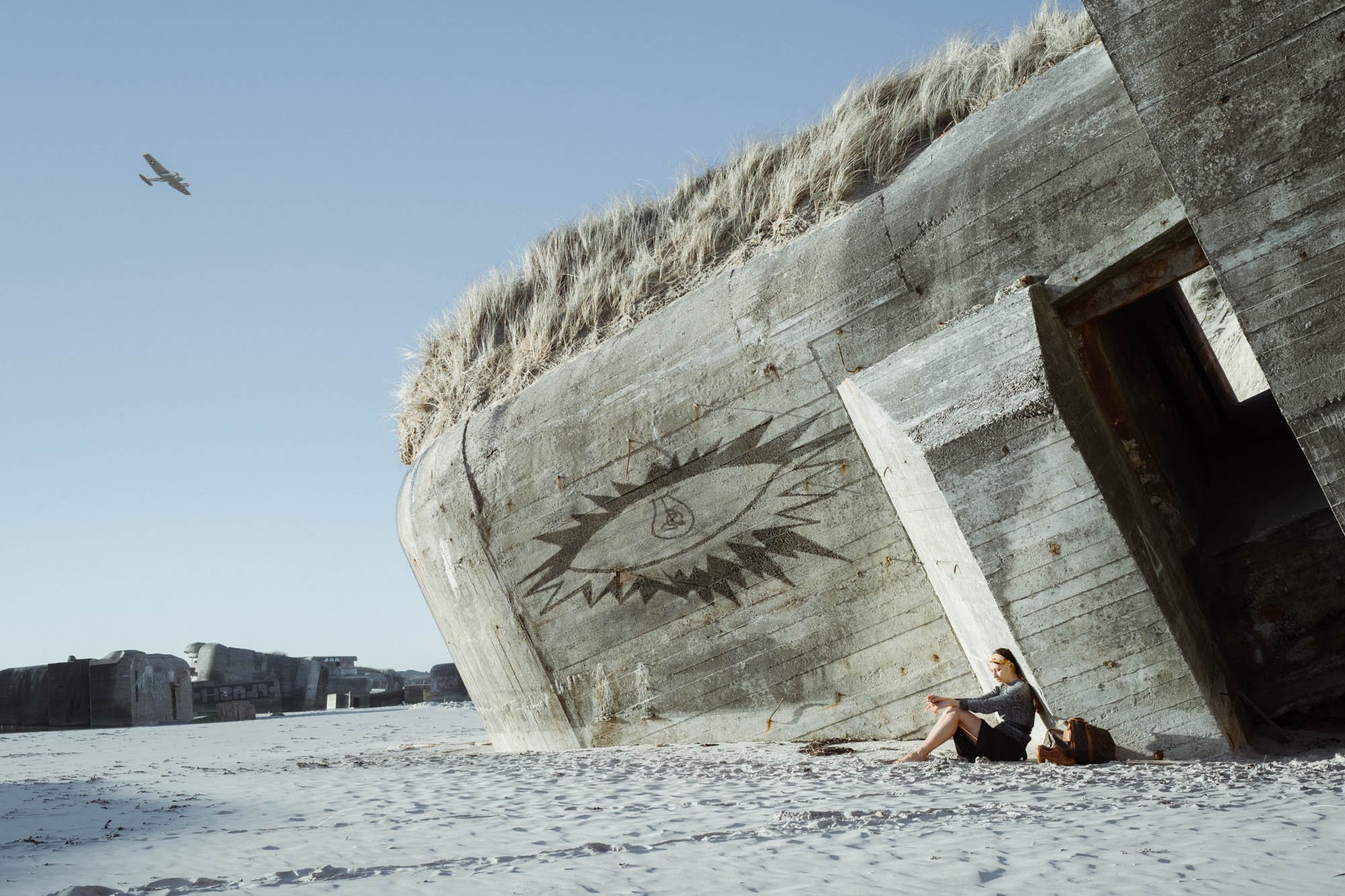Behind the image: “Guernica Revisited”
Project Summary
The images in ‘31 explore social and political parallels between the present and the late 1920s and 1930s.
The project’s limited-edition archival pigment prints measure 28 x 42 cm (11 x 16.5 inches).
Caption to “Guernica Revisited”
“Guernica Revisited” is an invocation of the 1937 bombing of the Basque town of Guernica.
Germany and Italy both used the Spanish Civil War as a proving ground for the effectiveness of new military equipment and tactics, experience that gave them strategic advantages as World War II began. One of the most infamous such operations, the merciless bombing of the Basque town of Guernica, took place in April 1937. Operation Rügen, as Axis powers called the attack, took place at the behest of nationalist rebel Francisco Franco, who soon became the dictator of Spain.
For maximum impact the Nazi Luftwaffe’s Condor Legion and the Italian air force (Aviazione Legionaria) struck the town on market day, when people from nearby villages were also present. As the attack on civilians became international news the aggressors claimed innocence, placing the blame on others. Although about 300 civilians perished, Western powers never officially acknowledged the bombing of Guernica as either a war crime or a crime against humanity.
By contrast, today Western powers routinely characterise Russia’s missile attacks against Ukrainian civilian targets as war crimes, and like the Axis powers of World War II Russia places the blame on Ukraine and its Western allies. Thus far, Russia has suffered diplomatic consequences, economic sanctions, and the harm caused by Ukraine’s Western-supplied weaponry. Given the relative lack of consequences for unprovoked aggression, whoever the perpetrator, the idea of lasting peace seems elusive. Are peaceful peoples doomed to an endless cycle of violence? How will recent generations scarred by war come to terms with what has happened to them? How will they find justice, and what is that justice going to look like?
Guernica Revisited - 2022
Copyright: Zsofia Daniel; In frame: Kate Snig
Picasso and The Unblinking Eye
Pablo Picasso painted Guernica in 1937. Not long after its creation, the mural-size work became world-famous as a symbol of protest not only against the bombing but also against fascism in general. The image would go on to become one of the most well-known anti-war icons of the 20th century.
The focus of Picasso’s painting is a large, unblinking eye at the top of the work, just left of the canvas centre. The eye, an allusion to the cubical lamp in Goya’s painting The Third of May 1808 (which depicts the night of retaliation by French soldiers against innocent citizens of Madrid, after Spanish rebels rebelled against Napoleon’s takeover), contains a bare light bulb. The bulb is used to construct the pupil, and the word for light bulb in Spanish, bobilla, resembles the word bomba, the Spanish word for bomb.
Radiating from the eye-bomb are jagged, shrapnel-like lashes—another brilliant visual play on the Spanish word latigazo, which carries with it meanings “shock” and “whipping”—that point toward the painting’s groups of figures, leading the viewer to feel the figures’ suffering and pain. Looking at Picasso’s painting is not a one-way activity. The eye stares back at the viewer, as if asking “Did you cause this?”.
In the photograph “Guernica Revisited,” the eye painted on the ruined World War II artillery bunker creates an unsettling experience similar to they eye in the original painting. The electric stare fixes the viewer’s gaze on the image and the exploding lashes connect sky and ground, the bomber flying in the distance, and a refugee from another war, who apparently cannot escape the violence.
Pablo Picasso: Guernica, 1937
Francisco Goya: The Third of May 1808, 1814
Airplanes
Airplanes make significant appearances in many paintings from the late 1920s and early 1930s. The twenty-year period between the end of World War I and the beginning of World War II has been called the "Golden Age of Aviation." During this time, airplanes evolved from slow, wooden, fabric-covered biplanes to faster, sleeker metal planes with single wings.
While Italian Futurists embraced the new technology and created paintings inspired by flight (aeropittura), their German contemporaries feared it. Propelled by Italy’s military preeminence in aviation, the Italians’ fascination with the machine shifted national focus from the automobile to the airplane by 1930. In flight these artists found disorienting points of view and new iconographies to explore in painting, photography, and other media. Yet such images are missing from the work of the artists of Germany’s New Objectivity movement, such as Franz Sedlacek and Franz Radziwill. When their paintings included airplanes, they usually hinted at catastrophe.
The airplane in the photograph “Guernica Revisited” is more aligned with the latter view. In the image, a Heinkel bomber of the German Luftwaffe’s Condor Legion flies threateningly toward the viewer through a severe blue sky.
Detail of “Guernica Revisited” from the fine art photography project ‘31
Franz Radziwill : The Fatal Crash of Karl Buchstätter, 1928
Location
Location shot for “Guernica Revisited” from the fine art photography project ‘31
“Guernica Revisited” was created on the west coast of northern Denmark. After Germany’s 1940 invasion of Denmark (known as the Six Hour War) the building of the Atlantic Wall began.The wall’s main aim was to prevent an Allied landing.
The coastal battery in the image belonged to the German navy. Construction of the battery system began in January 1943, and its cannons were ready to fire on Allied positions by February 6th. The battery was armed with four Danish 12cm coastal cannons, which until then had stood near Copenhagen. The cannons’ projectiles could reach a distance of up to nine kilometers. In February 1944 the Danish cannons were replaced with German 12.7 cm ship cannons, which had a longer firing range of 17.4 km.
A total of thirty-six concrete bunkers were built in this area; twenty of these had walls and ceilings that were two meters thick. Behind the dune that the structures were built into were barracks for the gunnery crews. In the first half of 1943, the battery system had a crew of 123 men.
Although most of the bunkers are covered with graffiti today, the eye on the wall of the bunker in this image was digitally composited during post-production.





